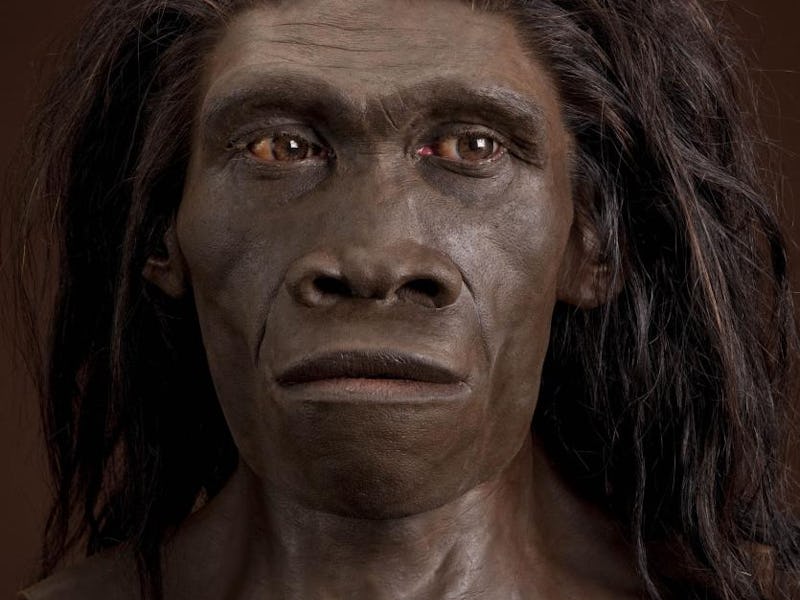Controversial Theory Suggests Laziness Drove Ancient Humans to Extinction
"They seemed to have thought, 'why bother?'"

In modern society, you can be lazy and not face much consequence. Don’t want to cook? Order Seamless. Don’t want to move? Call a Lyft. But according to a controversial new study, the same could not be said for Homo erectus, an ancient relative of our species. In the study, scientists claim that H. erectus went extinct because it existed in a constant state of meh.
Study co-author and Australian National University archeologist Ceri Shipton, Ph.D. explained in a statement on Friday that the “lazy” way H. erectus made tools and collected resources played a role in the species’ extinction. He says “they really don’t seem to have been pushing themselves” and argues that the early humans “didn’t have that same sense of wonder that we have.” This claim is, for a number of reasons, a problematic one.
The paper, published in PLOS One in late July, is an analysis of some stone tools found in the Arabian Peninsula, but, as critics have pointed out, it doesn’t show that the tools belonged to H. erectus. Chris Stringer, Ph.D., a research leader in human origins at the Natural History Museum London who was not associated with the paper, tells Inverse that the claim that H. erectus was lazy “seems like a large extrapolation from just one region” and argues that “with no human fossils and imprecise dating, we can’t even be sure which species made the tools.” Shipton has not immediately replied to Inverse’s request for comment.
Meanwhile, study co-author and University of Oxford postdoctoral fellow Huw Groucutt, Ph.D. took to Twitter to explain that the commentary Shipton gave in the university statement didn’t reflect his own interpretation of the findings.
The paper states that it describes new field investigations at a site called Saffaqah in central Arabia and aims to “establish how hominins adapted to this region.” Analysis of the design and heft of stone tools like flakes, hand-axes, and cleavers found in Saffaqah showed that the hominins who used them were “strong and skillful” but also “technologically conservative, and used least-effort strategies of resources procurement and tool transport.” In other words, there were better rocks around to use for building, but the hominins who made the Saffaqah artifacts looked at the rocks near their camp and decided they were good enough.
The hominins are described in the paper as “Acheulean,” which means they manufactured stone tools — specifically, the hand-axes that archeologists have previously associated with H. erectus. From Shipton’s point of view, the poor quality of these tools suggests that their makers — which he argues are H. erectus — weren’t inclined to progress technologically.
“To make their stone tools they would use whatever rocks they could find lying around their camp, which were mostly of comparatively low quality to what later stone tool makers used,” said Shipton. “At the site we looked at there was a big rocky outcrop of quality stone just a short distance away at a small hill… They knew it was there, but because they had enough adequate resources they seem to have thought, ‘why bother?’”
Dr. Ceri Shipton on stie at Saffaqah.
While the design of these hand-axes is typically associated with H. erectus, critics argue that this study doesn’t present enough evidence to say H. erectus made the Saffaqah tools, let alone claim they were lazy. Asked if he agrees with Shipton’s assessment that the ancient humans were lazy and whether it was fair to draw that conclusion from the quality of the tools, George Washington University professor of human origins Bernard Wood, Ph.D. tells Inverse “no” and “no.”
Shipton’s interpretation also conflicts with another controversial H. erectus study claiming that, actually, these guys sailed around the world and talked to each other — which doesn’t exactly seem lazy. But most scientists aren’t on board with that hypothesis either.
This essentially leaves us where we started: We know these ancient humans lived between 1.89 million and 143,000 years ago, likely had some cross-over with ancient Homo sapiens, and, over the course of their existence, became taller, leaner, and larger-brained than their forebears. The rest remains a mystery. Whether or not they were lazy is up for debate, but they are largely thought to be the early human species that lived the longest. If that’s the case, then, lackadaisical or not, they must have been doing something right.